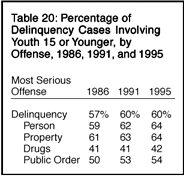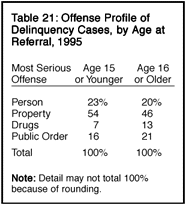|
Age at Referral
Compared with the delinquency caseload involving older juveniles, the caseload of youth age 15 or younger included a larger proportion of property offense cases and smaller proportions of drug and public order offense cases (table 21). Property offense cases accounted for 54% of the cases involving youth age 15 or younger compared with 46% of cases involving youth age 16 or older. Drug law violations made up 7% of the cases of younger juveniles and 13% of cases involving youth age 16 or older. The rate of delinquency cases generally increased with the age of juveniles. For example, the case rate for 16-year-olds was 55% greater than the rate for 14-year-olds, while the rate for 14-year-olds was more than 3 times the rate for 12-year-olds (figure 5). Contrary to this pattern, the case rate for 17-year-olds was less than the rate for 16-year-olds. The Nation�s juvenile courts disposed 115.2 delinquency cases for every 1,000 youth age 17 and at risk of referral to juvenile court in 1995. Among 16-year-olds, however, there were 119.1 cases disposed for every 1,000 youth at risk. For every age group between 12 and 17, delinquency case rates increased 35% or more between 1986 and 1995 (table 22). In fact, in every one of these age groups, delinquency case rates reached a 10-year peak in 1995. For younger juveniles, however, case rates dropped from 1991 to 1995. Delinquency case rates dropped 11% for 10-year-olds and 2% for 11-year-olds. 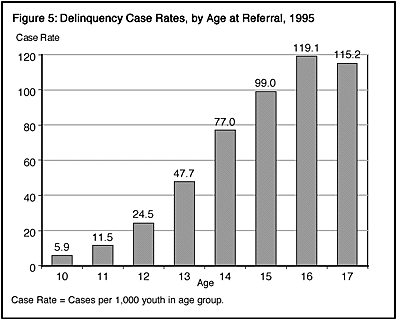 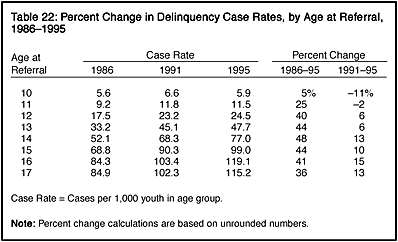 Within individual offense categories, variations occurred in the pattern of age-specific case rates in 1995. Case rates increased continuously with age for drug and public order offenses, while the rates for person and property offenses peaked in the 16-year-old age group and then declined slightly for 17-year-olds (figure 6). Drug law violation case rates showed the sharpest increases after age 13. The case rate for drug offenses for 17-year-old juveniles was 736% greater than the corresponding case rate for 13-year-olds. For person offenses, the 17-year-olds� case rate was 86% greater than the 13-year-olds� case rate. For property offense cases, the difference was 80%, while for public order offenses the case rate for 17-year-olds was more than 3 times the rate for 13-year-olds. 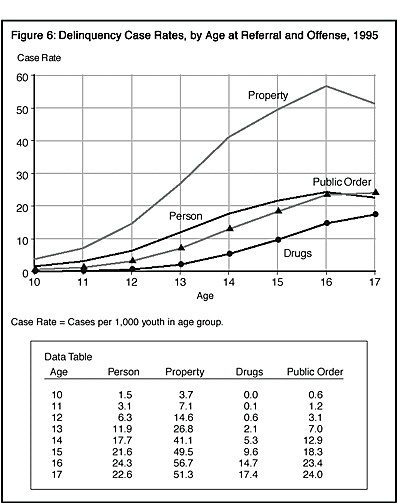
|
